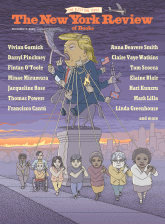People who have lived under the rule of a charismatic autocrat—caudillo may be the most precise word—have no trouble recognizing the nature of Donald Trump’s grip on America’s psyche. A talented caudillo drives a stake into his country’s consciousness. He becomes inescapable. You walk around with him in your head, fantasize about him, rage at him, psychoanalyze him. He invades your emotional life, colonizing your very way of thinking, and creating the illusion that he is omnipresent, like an unvanquishable parent.
Chileans used to talk this way about Augusto Pinochet, who held absolute power over Chile from 1974 to 1990. Trump has at his disposal fewer tools of state terror than Pinochet did, which makes his success as a caudillo all the more impressive—an achievement, in Trump’s case, of personality, monstrousness, and bluster. (This is not to minimize the tools of state terror he has managed to deploy, such as federal officers for the suppression of protests, the Department of Justice as a weapon against his political rivals, and ICE as a virtual paramilitary force rounding up and detaining immigrants.)
A demoralizing aura of invincibility surrounds the caudillo—until a glimmer of vulnerability is shown and the aura evaporates. Trump has been able over the past three and a half years to drown out a relatively diffuse opposition and mesmerize or bully the country into believing in his potency. Even our outrage has become a form of submission. He traps us into repeating his lies, though we do so in order to debunk them. When his opponents ridicule him, his presence manages to expand, because the ridicule reaffirms his grip on us. And so the illusion of invincibility grows stronger.
The illusion partly arises from our fear that the caudillo’s viciousness cannot be matched: he and his allies will do anything to retain power, and his opponents, schooled in the niceties of institutional democracy, don’t have it in them to fight dirty enough to stop him. The caudillo depends on our exaggeration of his power. When he says he will overturn the results of the election if he loses, we believe him. Historical knowledge may inoculate some against demagoguery, but it also provides a rearview mirror of doom. We know that democracies collapse and that built into the US electoral system may be a pathway to its destruction.
Joe Biden’s job is to break the caudillo’s spell and, as unlikely as it once seemed, this middle-of-the-road career politician, not notable for his charisma, appears to be the perfect candidate to do so. When he became the Democratic nominee, he seemed to many the weakest possible choice. His lack of skill at galvanizing constituencies sank his previous presidential campaigns and made him appear, at first, a feeble opponent to Trump. You can see him struggle with his lifelong stutter when he speaks. He has a self-sabotaging habit of interrupting himself mid-sentence, making his thoughts seem garbled and unformed. He is elderly, his eyes water, his gray hair creeps thinly down the back of his neck. He offers himself as the kind of caretaker president in which stable democracies specialize: an unspectacular manager with decent intentions whom most citizens have the luxury of not thinking about for weeks at a time.
Yet there is an undeniable solidity about him, a kind of bedrock ethical sincerity. He has successfully cast himself as an Everyman whose personal misfortunes have imbued him with an uncommon (and occasionally overwrought) capacity for compassion. Listening to voters’ tragic stories, he lowers his head in priestly sympathy. A minute later he will tear at Trump with cold precision, calling him “a climate arsonist,” “disgusting,” “unfit,” careful all the while not to shed too much heat, the temperature Trump thrives on. Forced to engage a rival who has managed to focus—and temporarily unify—the vast opposition to him, Trump seems diminished and exposed.
Even before Trump’s display of deranged indifference toward the Covid-19 pandemic last spring, I had been recklessly predicting a decisive Democratic victory in November. I believed that Americans would recoil from the caudillo’s brute purveyance of hatred and that the Republican Party would feel the fallout for decades. Recent events have strengthened this belief. Trump’s dismissal of Covid-19 has resulted in his contracting the virus himself. If polls are to be trusted, significant numbers of suburbanites are abandoning the caudillo, despite his warning that crazed mobs will be gunning for their homes if he isn’t reelected. To convince voters that the country’s most gentrified, low-crime cities—New York, Portland, Seattle, Minneapolis, San Francisco—will become permanent vectors of anarchy and insurrection requires magical abilities that the caudillo does not possess.
The nightmare scenarios have been spun: if he is ahead on election night, the caudillo will declare victory before mail-in ballots have been counted and then, with the support of the Supreme Court, disqualify those ballots; Republican-controlled battleground states will appoint slates of “faithless” electors to defy the popular vote; the caudillo’s attempt to steal the election will provoke mass protests, in response to which he will invoke the Insurrection Act and impose martial law. None of these scenarios is to be taken lightly. But Trump’s thin institutional support, combined with the Democrats’ fortified army of watchdogs and the Supreme Court’s unanimous ruling in July against faithless electors, minimize the caudillo’s ability to pull off such a golpe. Allegations of voter fraud will have to be proven in the courts.
Advertisement
The matter now rests uneasily with the electorate. Are 80 million Americans sufficiently racist, sufficiently in favor of the curtailment of equal rights, sufficiently obsessed with culture wars to ignore their health, the environment, their employment, and the quality of their schools? It is far more likely that the caudillo will depart the White House on January 20 as an isolated and despised figure.



